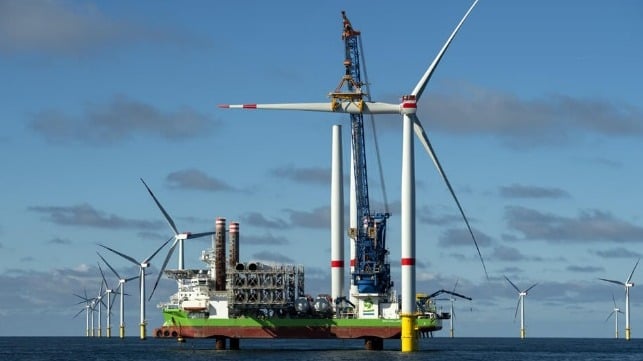RWE is Latest to Stop U.S. Offshore Wind Activities

German renewable energy giant RWE is set to announce that it has stopped its offshore activities in the United States and setting higher requirements for future investments because of the “political developments.” The company follows TotalEnergies, Shell, and BP which previously announced they were backing away from projects in the U.S., and Equinor which last week said it is considering “legal remedies” after Trump’s Department of Energy suspending offshore work on a full-permitted wind farm off New York.
RWE released a manuscript of the speech Dr. Markus Krebber, CEO of RWE, will deliver next week, April 30, during the company’s annual meeting. In the speech, he will highlight the company’s many successes in 2024 and the progress being made on the Sofia wind farm for the UK and with the Danish wind farm Thor. He notes RWE has a combined offshore wind farm capacity currently of 3.3 GW and a further four projects with a capacity of 4.4 GW under construction.
Turning to the U.S. market environment, Krebber will tell shareholders, “We have stopped our offshore activities for the time being,” while the company has also introduced “higher requirements for future investments in the U.S.” He says despite the company’s success with onshore wind, solar energy, and battery storage, “Nevertheless, we remain cautious given the political developments.”
RWE became the largest leaseholder in the New York Bight with a potential 3-gigawatt area it won in the hotly contested 2022 offshore auction. At the end of the same year, RWE won a lease area to develop up to 1.6 GW off the coast of Northern California, which it projected would be one of the first commercial-scale floating wind farms in the country. It is also working with Greater New Orleans and GNOwind Alliance for regional opportunities. It launched site investigations off California in 2024 and proposed the Community Wind project with 1.3 GW of capacity to New York State.
The company in November 2024 warned it was delaying investments citing higher risks for offshore wind in the U.S. and a slower ramp-up of the European hydrogen economy. Krebber will tell shareholders next week the company has raised its threshold expectations for new investments. For future projects, he says they will increase the average return requirement from 8 percent to more than 8.5 percent.
For the U.S., he notes while the company surpassed 10 GW of generation capacity from renewable energy at the start of 2025, RWE will enforce higher requirements for future investments. This includes having all necessary federal permits in place, tax credits being safe harbored, and all relevant tariff risks mitigated. Only if these conditions are met for future investments, for the time being in onshore wind and solar, will it “be possible given the political environment.”
Developers of U.S. offshore wind projects remain concerned after the moves by the Trump administration including launching a review of the leasing process, pulling permits for projects in New York and New Jersey, and stopping funding on a research project in Maine. At the beginning of the month, four offshore projects were reported to be proposing to delay their state-level regulatory reviews. Shell reported in November 2024 that it would take a $1 billion charge as it moved away from U.S. offshore wind projects and Equinor said if a full-stop ensues for its Empire Wind project, it would have to repay $1.5 billion in financing and would be exposed to termination fees from its suppliers.
